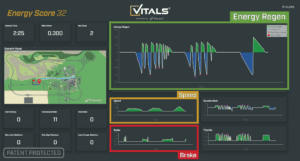Electric Bus Simulators with Integrated Assessment Tools Improve Transit Workforce Development
Published

The federal government is going all-in on a battery-powered future for mass transit—but transit agencies themselves aren’t so sure. Last year Vice President Harris announced a collection of new federal initiatives to cut carbon emissions from buses and trucks. These initiatives include “$1.1 billion in new funding to help cities and states purchase electric buses for their public transit systems, and $17 million for school districts to purchase electric school buses. … Of the $108 billion in new funding for public transportation… electrification is a top priority.”
But many agencies have found themselves on a bumpy road as they’ve transitioned to electric buses. Some operators immediately take to driving an ebus, appreciating the difference in torque, as well as the quieter and smoother ride. But many operators struggle to adjust to the handling (e.g., “it kind of feel[s] like the whole bus is waddling”) and managing range/battery state-of-charge.
The transition to ebus means a fundamental shift in how we approach costs. With diesel buses, tuning and maintenance are the primary ways to control fuel costs. Ebus is different. Here, the driver is a much bigger factor. A well-trained operator gets further on the same charge. That can translate to less charging during the day, shorter charging periods at night, and even a less extensive build-out of charging infrastructure.
That’s why the 2021 Bipartisan Infrastructure Bill’s $5 billion expansion of the Department of Transportation’s Low- and No-Emission Transit Vehicle Program includes allowances for operator training and other workforce development.
Electric Bus Simulators and Workforce Development
Immersive simulation training is widely considered the best tool currently available for transit workforce development—especially as they transition to electric buses. Electric bus simulators don’t just give operators a platform for becoming accustomed to the interaction of terrain, weather, outdoor temperature, and range/battery state of charge. Simulator training also has a proven track record for high trainee throughput and demonstrated efficacy in quickly and effectively introducing drivers with little previous experience to safely operating a large commercial motor vehicle (CMV).
A key element for ensuring that your immersive bus simulator will help transit operators adapt to electric buses is an integrated interactive assessment and learning tool. FAAC’s immersive electric bus simulators include VITALS (the Virtual Instructor/Trainee Assessment & Learning System). The VITALS Dashboard is a graphical display with colored zones that can be seen in real-time from the Instructor Station during a live scenario or once a scenario is completed. More than simply a “score sheet,” VITALS acts as an interactive playbook for the instructor. It helps them develop custom curricula for each trainee based on recognized best practices, agency policy, and that trainee’s specific strengths and areas of improvement.
The VITAL Element in Electric Bus Operator Training
With FAAC simulation solutions every immersive transit training scenario has been “vitalized”: the system automatically tracks key operator behaviors (i.e., acceleration, braking, approaches to intersections, curb kicks, traffic violations, etc.) without any extra effort from the trainer.
But both standard and custom scenarios can also be “fully vitalized” by the trainer. This means they can define zones along the scenario route where specific driver actions are expected. Fully vitalizing a scenario gives trainers the ability to track trainee progress with unprecedented detail, zeroing in on problem areas while highlighting strengths.
For electric bus applications, VITALS includes the VITALS Regen Dashboard for electric buses. This unique training feature graphs and maps how the trainee’s acceleration and braking behavior affect the electric bus’s battery state-of-charge throughout the driving scenario. After every training drive, the operator has immediate visual feedback, helping them dial in new driving habits in order to make the most of electric bus range.

No other training system on the market gives trainees, instructors, and agencies this level of insight into the interaction between operator behavior, driving conditions, route layout, and vehicle performance.


